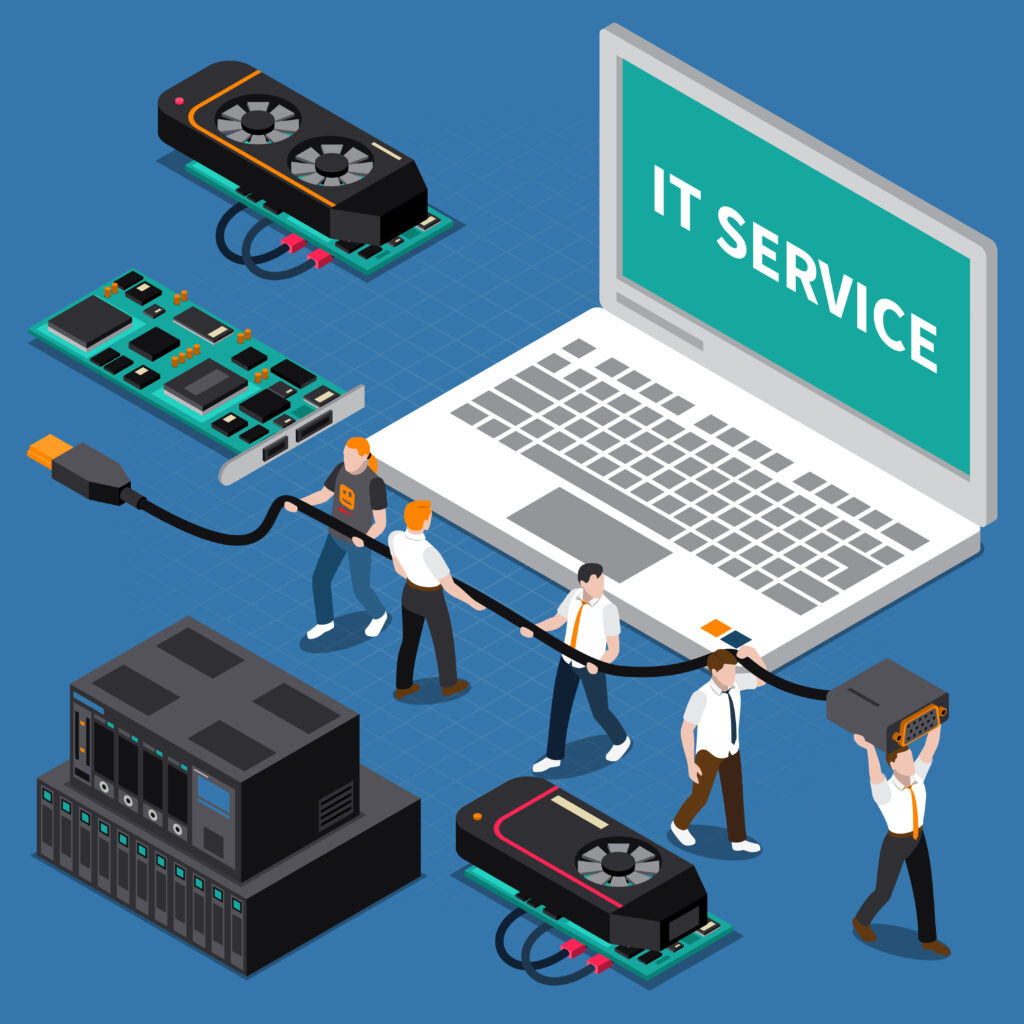The paced path of technological innovation has led us to an exciting new era, starting from high-end smartphones and self-driving cars to state-of-the-art medical equipment, the potential of which has to do with fine-tuned relationships between hardware and firmware. Briefly speaking, think of hardware as the physical body of a device, while firmware is its guiding spirit, ensuring smooth communication between the machine and its software. We can only understand the impact of the components on the latest tech when we take up their roles in recent advancements and how they work together to cause actual progress.
Hardware: The Backbone of Technological Advancement
The Role of Hardware in Next-Gen Devices
Hardware is the main physical structure of any device. Hardware encompasses all of the physical parts used, such as processors, memory units, sensors, and the input/output interface. The designs and quality of the hardware would decide the performance and efficiency of any device. A perfect example of this could be the silicon chips that evolved into more advanced materials, so they could execute operations faster without wasting much energy. This leads to the development of better, more powerful smartphones and laptops.
Hardware consists of the physical parts of a device, including processors, memory modules, sensors, and display units. It serves as the backbone of other technologies built on it.
Key Innovations in Hardware
- Miniaturization and Integration: The shift towards smaller, more efficient parts has enabled higher computation within smaller devices. The latest advanced microprocessors and SoC designs have significantly impacted industries in the fields of mobile technology and IoT.
- Quantum Computing Hardware: Quantum processors from organizations like IBM and Google are supposed to solve problems, which were before unsolvable. This technology would revolutionize other fields such as cryptography, drug discovery, and artificial intelligence, as well as create new possibilities for us to contemplate.
- Edge Computing Devices: The growing use of edge computing has allowed for the development of dedicated hardware that performs data processing at the source to enhance efficiency and real-time decision-making. This is remarkable for self-sufficient systems as well as intelligent urban areas.
Challenges in Hardware Development
- Rising Costs:
- Hardware development is becoming increasingly capital-intensive because of the increasingly complex nature of new technologies.
- Advanced hardware design, testing, and manufacturing require considerable resources, equipment, and skilled labor.
- Sustainability issues:
- Hardware development increasingly raises environmental concerns. The manufacturing and disposal of hardware components can cause ecological damage, making the use of eco-friendly materials and practices a priority.
- Transistor scaling has physical limits. Quantum effects start interfering with the operation of transistors at such small sizes as they approach atomic dimensions, thus creating major roadblocks. At each step in size reduction, it becomes very difficult to keep performance up.
- Problems such as electron leakage and increasing power density become more apparent, thus affecting the efficiency and reliability of the smaller transistors. These problems would make further miniaturization difficult and slow down the performance improvement pace; therefore, it’s crucial to look for alternative materials and new designs to overcome fundamental limits.
- Requirement for Innovation:
- Researchers and engineers are seeking novel paradigms such as quantum computing, neuromorphic computing, and new materials to support further advancements.
Firmware: Bridging Hardware and Software
Firmware is the fundamental software whose code is embedded in a device’s hardware to act as a connecting link between the hardware and the higher-level software applications that should ensure everything works together properly.
Firmware Evolution
- Complexity and Capability: In the early stages, firmware was very simple. It mainly allowed devices to function properly. However, modern firmware has become very complex and can allow features such as OTA (Over-The-Air) updates, security protocols, and even advanced diagnostics in the system.
- Security Improvements: Firmware has been an essential part of security in devices, preventing cyber threats. Secure boot, hardware-based encryption, and trusted platform modules (TPMs) ensure integrity and confidentiality.
- Adaptive and Learning Firmware: AI integration makes firmware adapt to user behavior and dynamically optimize device performance. AI-driven firmware is a foundation for next-gen smart devices.

Firmware in Emerging Technologies
Autonomous Vehicle:
- The firmware of a self-driving automobile manages the prime functions such as sensor fusion, which integrates data from various sensors to perceive the environment.
- It also includes real-time decisions so that the vehicle can react to dynamic conditions, and it supports navigation to ensure safe and accurate route planning.
Wearable Devices:
- Firmware enables precise health monitoring in devices like fitness trackers or smartwatches by collecting and processing data regarding vital signs such as heart rate and activity levels.
- It also ensures that it is well connected with other devices so that users can sync their data with their smartphones or computers for analysis and tracking.
Industrial Automation:
- Firmware in robotics and industrial systems is critical for maintaining precision and efficiency in manufacturing processes.
- It ensures that machines run safely, as per programmed instructions, and adapt to changes in the production environment with an improvement of productivity and safety.
Click the link below to learn more about the latest advancements in firmware development:
Emerging Trends in Firmware Development – A Technical Exploration.
The Symbiotic Relationship Between Hardware and Firmware
The success of next-gen devices lies in the interdependence of hardware and firmware. There are a few key areas in which this can be observed:
- Performance Optimization
Modern devices depend on firmware to unlock the full potential of their hardware. For instance, a GPU’s performance in gaming or AI tasks can be fine-tuned through firmware updates, thereby enhancing speed and efficiency.
- Energy Efficiency
Firmware is important in power management. It ensures that the hardware is used efficiently without wasting energy. This is especially important for battery-driven devices such as smartphones and electric vehicles.
- Improved User Experience
Firmware-based features such as touch sensitivity, camera optimization, and connectivity enhancements are significant for user experience. For example, OTA updates can bring new features or enhance existing ones without any hardware change.

Real-World Applications
- Home Entertainment Systems: The latest home entertainment systems, in turn, feature custom hardware and firmware in the provision of great high-definition video and crystal-clear audio. These devices smoothly connect to any smart home appliances, provide an immersive gaming experience, and convert any living room into an exclusive entertainment centre.
- Mobile Phones: The smartphone market aptly illustrates the synergy between sophisticated machinery and software. Companies such as Apple and Samsung are in an endless race to come up with more powerful chips, clearer screens, and better cameras. Their firmware ensures such features run smoothly with a good experience of beautiful photos and longer-lasting batteries.
- Healthcare Devices: New-generation medical equipment, including insulin pumps and heart monitors, heavily depend on good hardware and firmware to get good data for proper monitoring.
- Aerospace and Defense: In aerospace and defense, new updates in firmware will provide the user with diagnostic tools that are meant to help the patient by ensuring better care and outcomes. Aerospace uses sophisticated firmware controlling such things as avionics, navigation, and communication systems while bettering hardware- in this case, improved sensors and processors- encompasses higher situational awareness leading to a better and safer flight, and integrating both is key.
Challenges in Hardware-Firmware Integration
Although hardware and firmware work in synergy to drive innovation, they also create problems:
- Compatibility Issues: Compatibility of firmware with different hardware components is quite a complex task, especially in devices with diverse functionalities.
- Update Risks: Firmware updates are helpful but carry the risk of introducing bugs or vulnerabilities. Robust testing and validation processes are necessary to mitigate these risks.
- Threat Security: With more and more control over hardware in the hands of firmware, firmware acts like a targeted cyberattack. Device and user information must be very strongly protected from security threats.
Future Trends and Prospects
- Integration of AI and Machine Learning: Future firmware will utilize AI to further optimize hardware performance, predict maintenance needs, and personalize user experiences.
- 5G and Beyond: With the widespread adoption of 5G networks, there is a growing demand for hardware and firmware that can handle ultra-fast speeds and super-low latency.
- Flexible and Modular Hardware: Advances in modular hardware designs will allow users to upgrade specific components without replacing the entire device, reducing e-waste and enhancing customization.
- More Importance on Sustainability: Eco-friendly hardware and energy-friendly firmware will find great value as industries start to focus more and more on lowering their footprints in nature.
- Quantum and Neuromorphic Computing: These are the times of quantum and neuromorphic computing, promising to bring up a whole new approach to hardware and firmware, thus revolutionizing industries from health care to AI and beyond, bringing newness in what would have been unthinkable before.
Want to know more about advanced manufacturing and how it influences AI hardware?
Conclusion
So, next-gen device technology is all about the interplay between hardware and firmware. Going forward, the further development of both hardware and firmware, being inextricably intertwined, will unlock previously unimaginable possibilities in all walks of life and modify our living, work, and interaction with the world. Developers and manufacturers will be able to fully leverage the symbiotic relationship to drive innovation and deliver transformative solutions by overcoming challenges and embracing future trends.
Vendors, for more blogs and case studies, visit us at Nanogenius Technologies .

